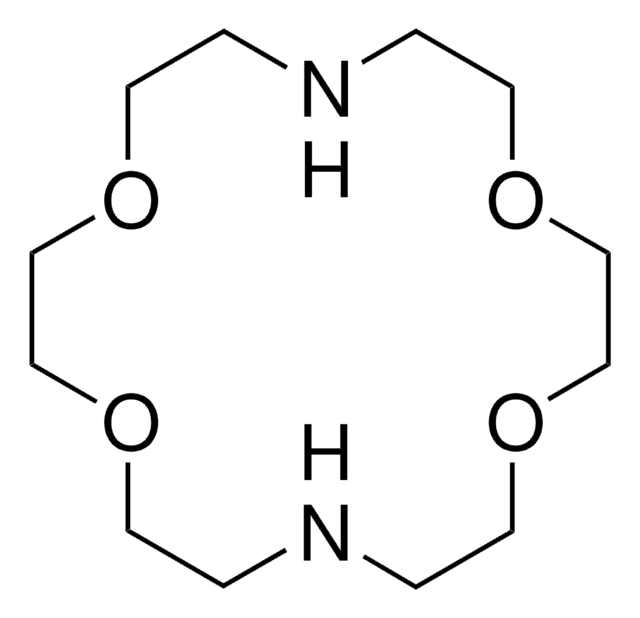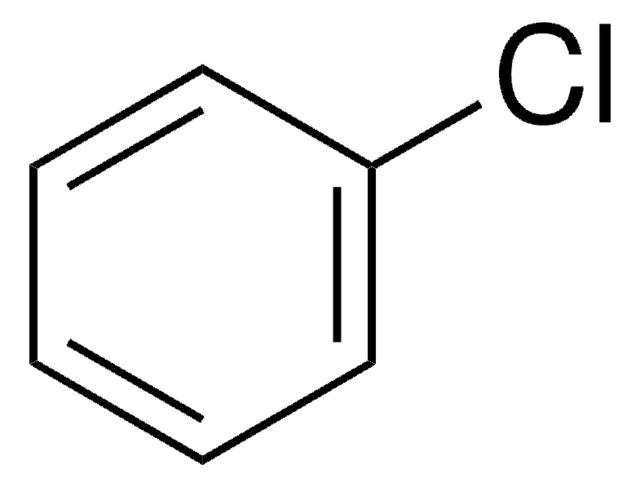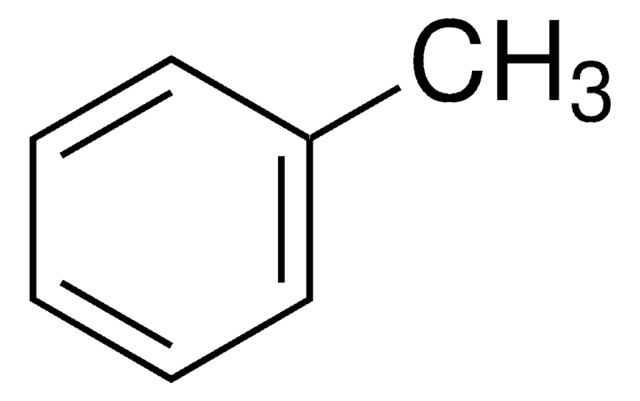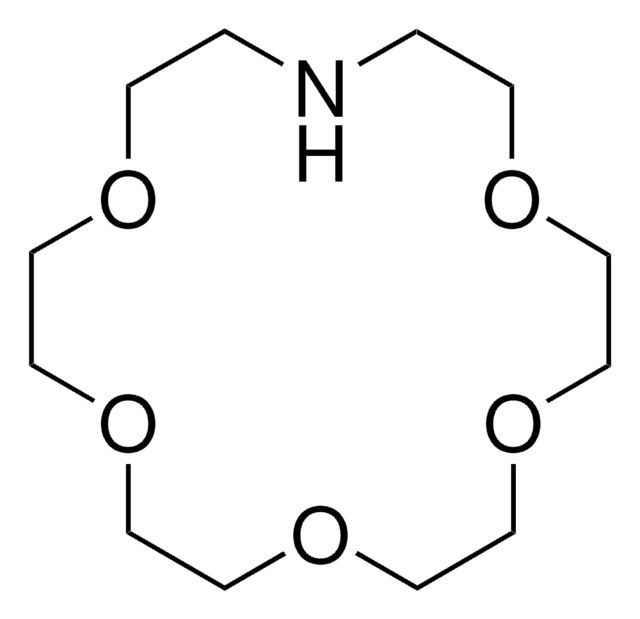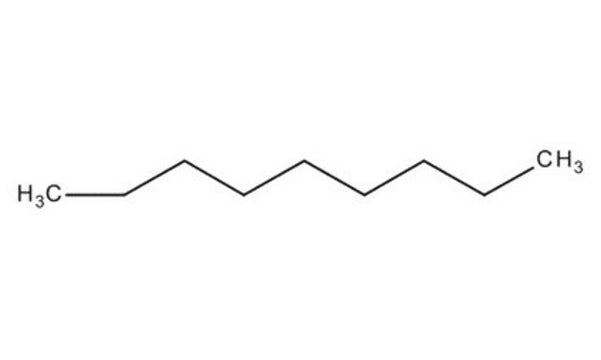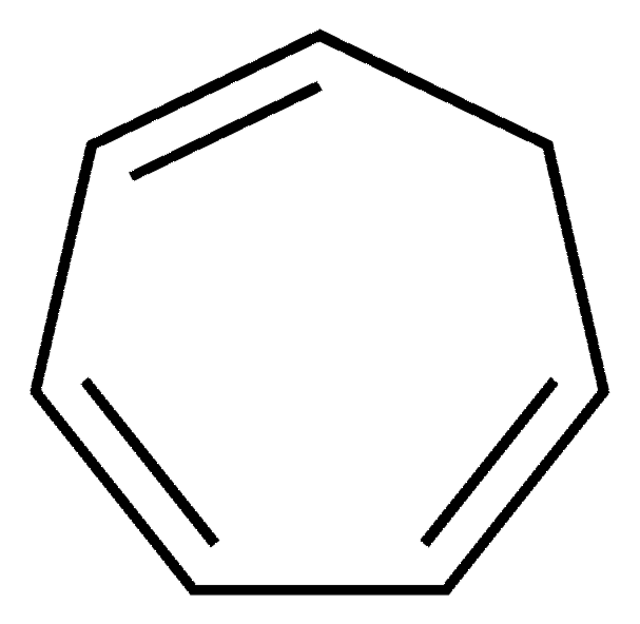About This Item
Recommended Products
grade
anhydrous
Quality Level
vapor density
3.9 (vs air)
vapor pressure
11 mmHg ( 20 °C)
assay
≥99%
form
liquid
autoignition temp.
428 °F
expl. lim.
6.5 %
impurities
<0.002% water
<0.005% water (100 mL pkg)
evapn. residue
<0.0003%
refractive index
n20/D 1.398 (lit.)
bp
125-127 °C (lit.)
mp
−57 °C (lit.)
solubility
ethanol: soluble(lit.)
density
0.703 g/mL at 25 °C (lit.)
SMILES string
CCCCCCCC
InChI
1S/C8H18/c1-3-5-7-8-6-4-2/h3-8H2,1-2H3
InChI key
TVMXDCGIABBOFY-UHFFFAOYSA-N
Looking for similar products? Visit Product Comparison Guide
Related Categories
General description
Application
- A photonic crystal material for the online detection of nonpolar hydrocarbon vapors.: Research on a novel photonic crystal material aimed at the efficient detection of nonpolar hydrocarbons such as octane, enhancing safety and monitoring in chemical processing environments (Bolshakov et al., 2022).
Packaging
Other Notes
Legal Information
signalword
Danger
Hazard Classifications
Aquatic Acute 1 - Aquatic Chronic 1 - Asp. Tox. 1 - Flam. Liq. 2 - Skin Irrit. 2 - STOT SE 3
target_organs
Central nervous system
Storage Class
3 - Flammable liquids
wgk_germany
WGK 2
flash_point_f
55.4 °F - closed cup
flash_point_c
13 °C - closed cup
ppe
Eyeshields, Faceshields, Gloves, type ABEK (EN14387) respirator filter
Choose from one of the most recent versions:
Certificates of Analysis (COA)
Sorry, we don't have COAs for this product available online at this time.
If you need assistance, please contact Customer Support.
Already Own This Product?
Find documentation for the products that you have recently purchased in the Document Library.
Customers Also Viewed
Protocols
Separation of Hexane; Heptane; Octane; Nonane; Decane; Undecane; Dodecane; Tetradecane; Hexadecane; Octadecane; Eicosane; Tetracosane; Octacosane; Dotriacontane; Hexatriacontane; Tetracontane; Tetratetracontane
This application demonstrates the suitability of the Petrocol column for the efficient analysis of hydrocarbons as listed in ASTM method D5134.
-Xylene; Nonane; Propylbenzene; Mesitylene; 1,2,4-Trimethylbenzene; 1,2,3-Trimethylbenzene; 1,3-Diethylbenzene; 1,4-Dimethyl-2-ethylbenzene; 1,2-Dimethyl-4-ethylbenzene; Durene; 1,2,3,5-Tetramethylbenzene; 1,2,3,5-Tetramethylbenzene; 2-Methylnaphthalene (β)
Our team of scientists has experience in all areas of research including Life Science, Material Science, Chemical Synthesis, Chromatography, Analytical and many others.
Contact Technical Service